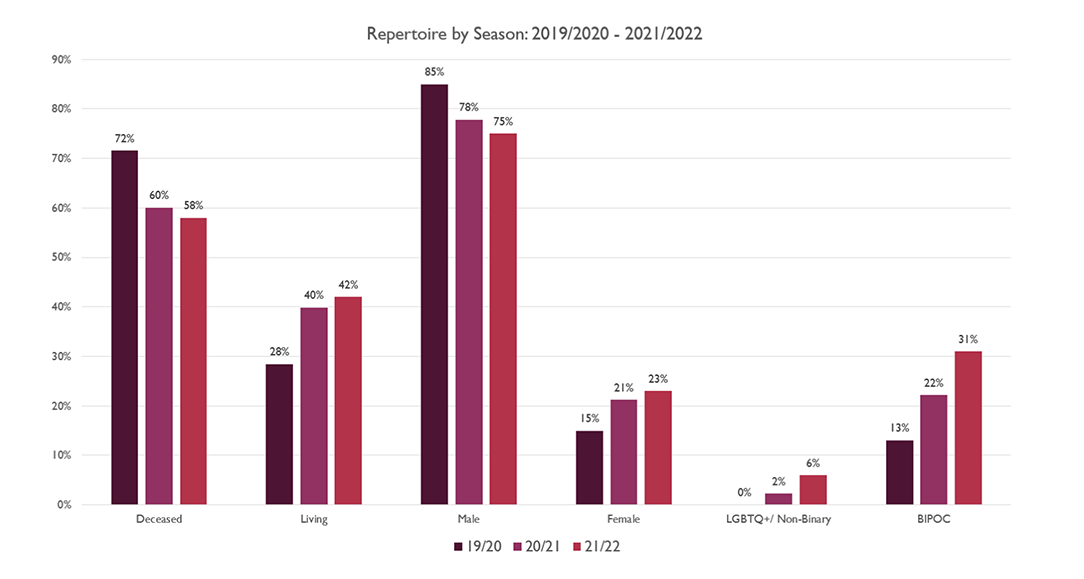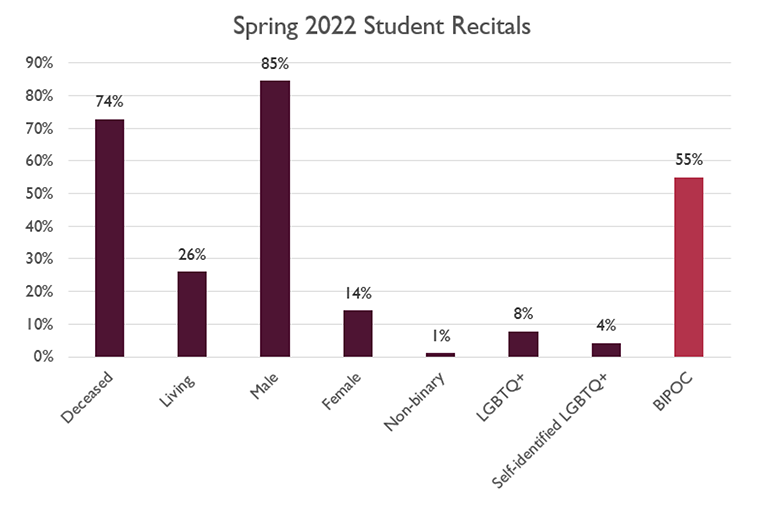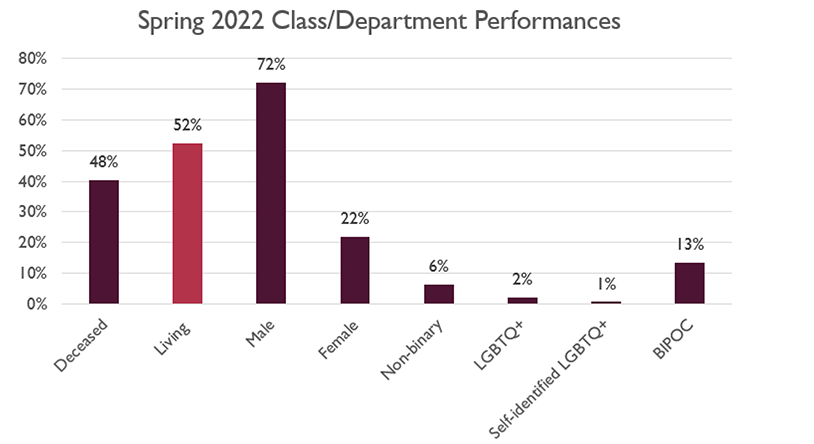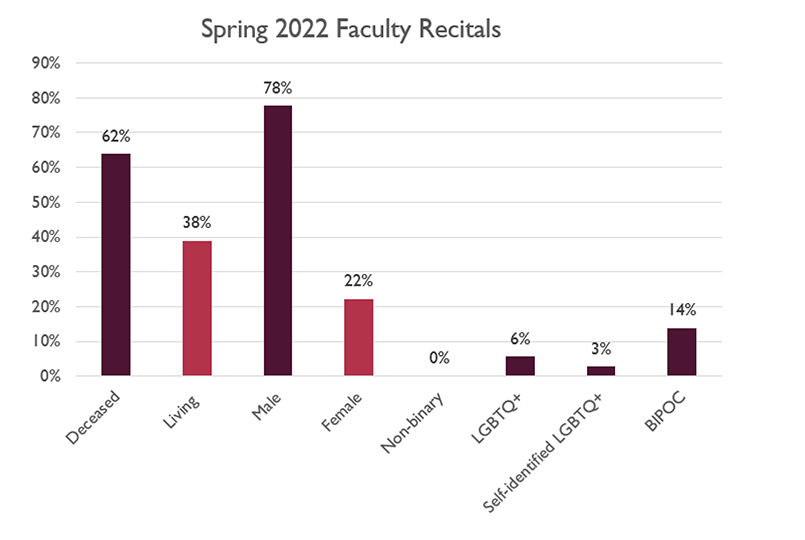In 2018, Longy School of Music of Bard College committed to the bold goal of dramatically changing the kinds of music that we experience on our campus. We embarked on a three-year initiative to track the diversity of the repertoire performed and studied at the school, with the intention of ensuring that 25% of this music would be created by composers who identify as BIPOC (Black, Indigenous, People of Color), women, LGBTQ+ and living. Our aim was for all constituents of the Longy community to consistently and intentionally bring forward the voices of artists who have been historically under-represented at American music conservatories. We did so understanding that a) our community members would have a variety of perspectives, pro, con and situated between these two poles, and b) there was a danger of people completing the assignment solely because there was a rule, rather than assessing the meaning of the exercise. “We also understood the urgency of the moment in time, and we knew that if we waited for the perfect way forward, for total consensus in our community or the exact “right” circumstance, we might be waiting forever. We chose forward motion and action over hesitation and worry. We chose to learn as we went, to improve along the way and to be accountable to ourselves, each other, and our community with a goal that could be tracked and analyzed quantitatively.
For too long, many American conservatories and performing arts institutions have operated on outdated and exclusive notions of excellence and belonging; they have been the arbiters of what constitutes worthwhile art and who gets to make it. At Longy, we have challenged this historical truth for well over a decade. In 2018, we wanted to more boldly resist marching along with a conservatory system that has both unwittingly and intentionally silenced the voices of BIPOC, women, and LGBTQ+ people while favoring a shortlist of mostly white, mostly European, often male “great” composers. We wanted to stop robbing our musical community and our audiences of the wealth of diverse possible musical voices and experiences.
At the end of the academic year 2021–22, we analyzed the data that had resulted from three years of pursuing our goal. Here, we share some of what we learned.
It is important to know that over the three years of the initiative, Longy supported the repertoire goal with a consistent and relevant series of workshops, convenings and professional development. The why of the pursuit was of equal or greater importance to any achieving of the numeric goal, and so we chose to pursue the repertoire goal and the question of why simultaneously. This decision was a crucial point in our learning. While some colleagues discouraged us from setting an ambitious goal before our full community was completely onboard or had spent enough time considering the challenge, we decided to move ahead anyway. Fully aware of the risks noted above, we found that changing behavior (encouraging the community to choose repertoire that may have initially been unfamiliar to them or that they felt was taking time away from more important repertoire) was often a stimulus to deepening understanding (having the conviction that this repertoire is important and exciting, and that performing it is vital to our humanity). We found that setting an ambitious goal and supporting it properly with resources and opportunities to discuss, try, discover, challenge and learn from each other was an effective way to change deeper patterns of both belief and past practice. The data that we share here illuminates a period of learning and transformation at Longy, during which our goal sparked deep conversations about priorities and how to implement systemic change.
Below, the graph illustrates how over the three years, Longy moved from a narrower version of musical representation (deceased, male, gender-conforming, white) to a more expansive and vibrant musical experience (living, female, nonbinary, BIPOC).




